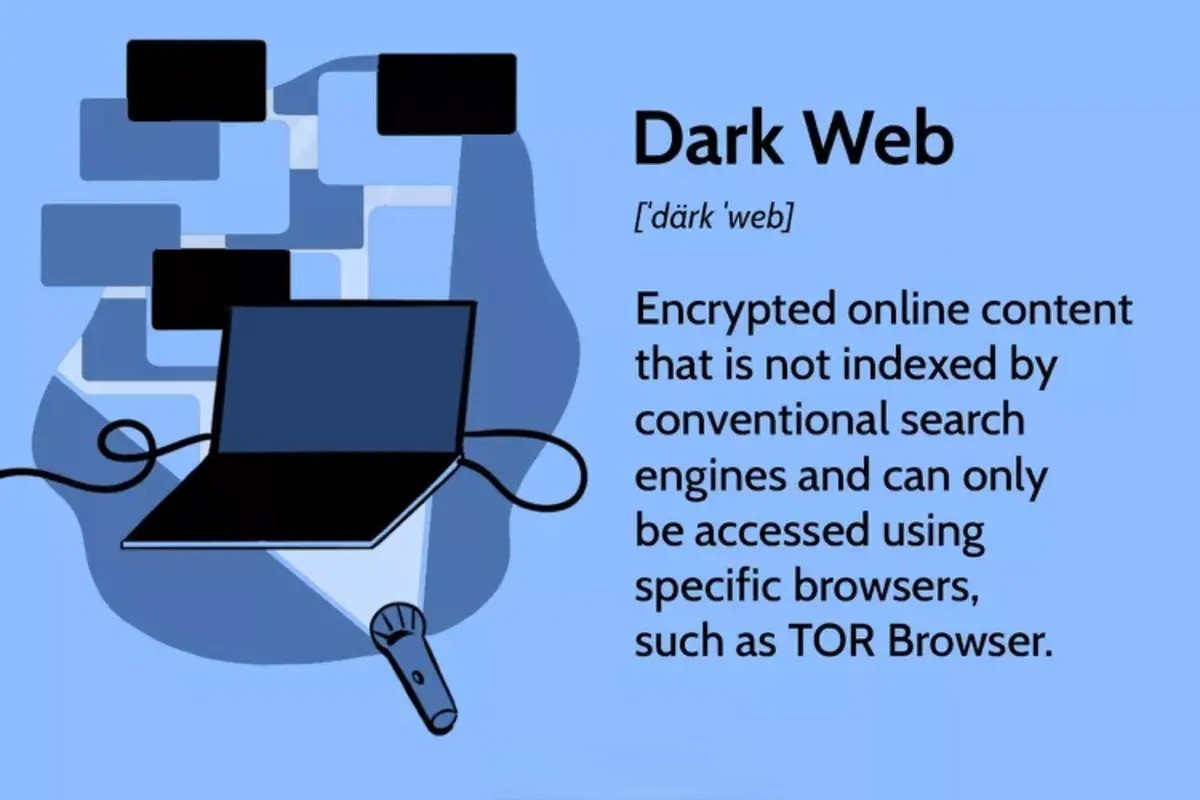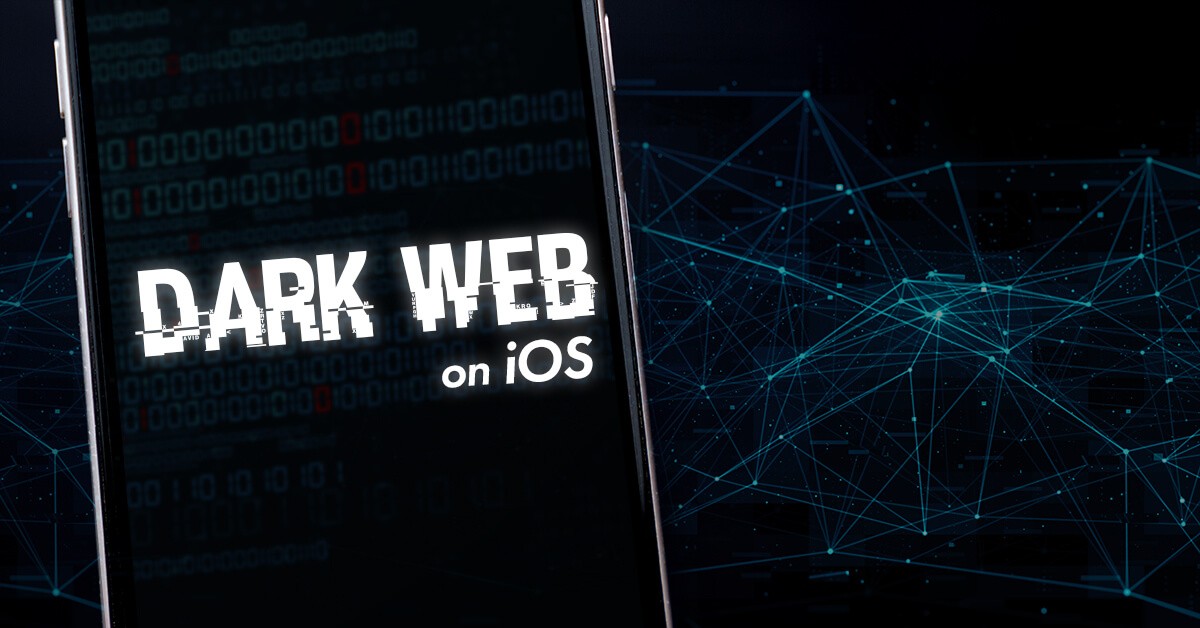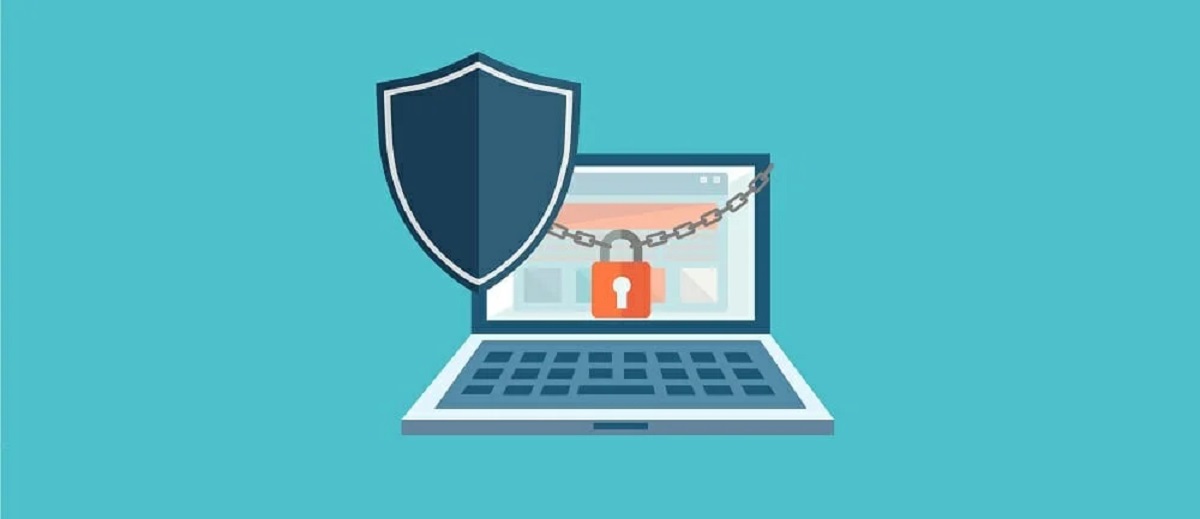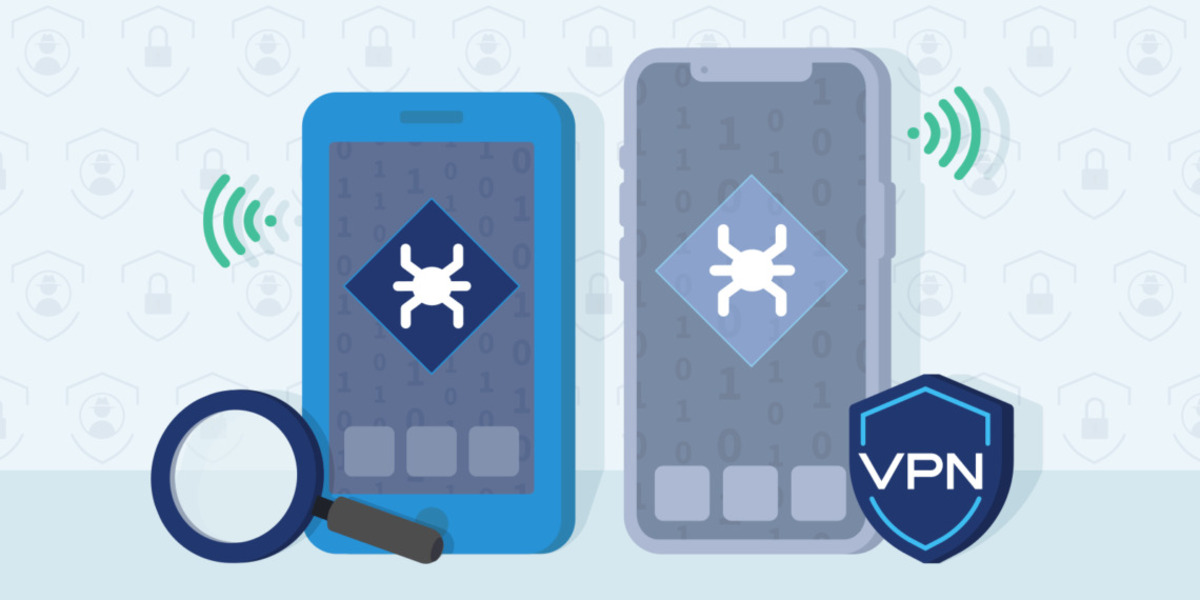What is the Dark Web?
The Dark Web is a part of the internet that is intentionally hidden and cannot be accessed through conventional search engines. It is a network of websites that are not indexed or easily discoverable, requiring specific software or configurations to access them. Unlike the Surface Web, which includes commonly searched websites like Google and Facebook, the Dark Web operates on a different infrastructure and allows users to remain anonymous.
One of the primary features distinguishing the Dark Web from the Surface Web is its use of anonymity tools, such as Tor (The Onion Router). Tor encrypts and routes internet traffic through a series of volunteer-operated relays, making it extremely difficult to trace the origin and destination of online activities. This anonymity attracts users seeking privacy, protection from censorship, or engagement in illicit activities.
The Dark Web serves as a playground for a wide range of online activities. It hosts various forums, marketplaces, and databases, which can be used for legitimate purposes like secure communication, whistleblowing, and journalistic endeavors. However, it is infamous for its association with criminal activities, including the sale of illegal drugs, hacking tools, stolen data, counterfeit goods, and even offering services like contract killing or hacking.
It’s important to note that the Dark Web should not be confused with the Deep Web. While the Dark Web is a subset of the Deep Web, the latter refers to all parts of the internet that are not indexed by search engines. This includes private databases, password-protected websites, academic resources, and other hidden content that can be accessed through traditional means, such as login credentials or specific URLs.
Exploring the Dark Web can be fraught with risks, as it operates beyond the boundaries of legality and conventional internet norms. It’s essential to have a clear understanding of the potential consequences and ensure necessary precautions are taken to safeguard personal information and digital security.
The Surface Web vs. the Deep Web vs. the Dark Web
When discussing the internet, it is important to understand the distinctions between the Surface Web, the Deep Web, and the Dark Web. These terms often get used interchangeably, but they represent different parts of the online realm.
The Surface Web, also known as the World Wide Web, is the portion of the internet that is accessible via search engines like Google, Bing, or Yahoo. This includes websites, blogs, social media platforms, news sites, online shopping portals, and more. It represents the visible and easily accessible part of the internet that most people interact with on a daily basis.
On the other hand, the Deep Web refers to the vast portion of the internet that is not indexed by search engines. It consists of password-protected pages, private databases, email accounts, cloud storage, online banking systems, and other content that requires specific login credentials or direct access. Academic resources, medical records, government databases, and other confidential information reside in the Deep Web. While hidden from traditional search engines, the Deep Web is legal and primarily used by individuals and organizations for secure communication and data storage.
Within the Deep Web lies the Dark Web, a subset that is intentionally hidden and operates with a high level of anonymity. Accessing the Dark Web requires specialized software, such as Tor (The Onion Router), which encodes and routes internet traffic through a network of relays, ensuring privacy and confidentiality. The Dark Web is notorious for its illicit activities, including the sale of drugs, weapons, counterfeit goods, hacking services, and other illegal transactions. However, it also houses legitimate platforms for whistleblowers, journalists, and individuals seeking privacy in repressive regimes.
It’s important to note that while the Dark Web is a part of the Deep Web, the majority of the Deep Web is not associated with illegal activities. It primarily consists of private information, data, and resources that are not intended for public consumption.
In summary, the Surface Web represents the visible and widely accessible part of the internet, the Deep Web contains content that is not indexed by search engines and requires specific access, and the Dark Web is the hidden, anonymous, and often illicit subset of the Deep Web. Understanding these distinctions is essential when navigating and discussing the different aspects of the internet landscape.
What does the Dark Web look like?
The Dark Web has a distinct look and feel that sets it apart from the Surface Web. Since it is intentionally hidden from search engines and operates on a different infrastructure, its design characteristics differ significantly. Here is a glimpse into what the Dark Web looks like:
1. Minimalistic Design: Dark Web websites are often designed with a minimalistic approach. The focus is on functionality rather than aesthetics, with simple layouts and plain color schemes. The emphasis is on providing quick access to content rather than flashy visuals.
2. Text-Based Content: Dark Web websites predominantly rely on textual content rather than graphics or images. This is partly due to the desire for faster loading times, as excessive graphics can slow down browsing. Additionally, text-based content ensures easy indexing and navigation through search functionalities within the Dark Web.
3. Encrypted Connections: To maintain security and anonymity, Dark Web websites typically operate over encrypted connections. This ensures that the browsing activity remains hidden and prevents potential eavesdropping or interception of sensitive information by unauthorized individuals.
4. Hidden URLs: Unlike Surface Web URLs that are easy to remember and access, Dark Web URLs are complex and consist of a string of random characters. These URLs act as a part of the anonymity layer, making it difficult for anyone to identify the exact location of a Dark Web website without proper knowledge or tools.
5. Marketplaces and Forums: The Dark Web is known for its thriving marketplaces and forums. These platforms provide a space for buying and selling illegal goods, services, and information. The design of these marketplaces and forums usually focuses on user-friendly interfaces, offering features such as rating systems, secure payment methods, and private messaging capabilities.
6. Hidden Services: Dark Web websites often utilize hidden services technology, which allows them to be operated anonymously and communicate directly with users without revealing their location. This technology ensures that the servers hosting these websites are invisible to external observers.
7. Limited Accessibility: A distinctive feature of the Dark Web is its limited accessibility. Websites and services within the Dark Web are only accessible through specialized software like the Tor browser. This additional layer of security and privacy ensures that only users who actively seek out the Dark Web can access its content.
Overall, the Dark Web has a unique design characterized by minimalistic layouts, text-based content, encrypted connections, hidden URLs, and specialized marketplaces and forums. It is designed to cater to the needs of users seeking anonymity, privacy, and engagement in activities that are not possible on the Surface Web.
The User Experience on the Dark Web
The Dark Web offers a different user experience compared to the Surface Web. Due to its hidden nature and the need for specialized software to access it, the Dark Web presents unique challenges and opportunities for users. Here’s a closer look at the user experience on the Dark Web:
1. Anonymity and Privacy: One of the primary reasons individuals visit the Dark Web is to maintain their anonymity and privacy. Users can browse and engage on Dark Web websites without revealing their true identities or locations. This anonymity allows individuals to freely express their opinions, engage in controversial discussions, or conduct activities they might not want associated with their real-world identities.
2. Navigating the Unknown: Unlike the Surface Web, where search engines make it easy to find information, navigating the Dark Web requires more effort. Users often rely on directories and hidden service indexes to discover relevant websites. Additionally, communities and forums within the Dark Web serve as gateways to various resources, providing recommendations, links, and information to assist users in finding what they need.
3. Illicit Activities: One aspect that makes the Dark Web infamous is its association with illegal activities. While engaging in illicit activities is strongly discouraged, it’s important to note that not all Dark Web users participate in illegal transactions. Some visit the Dark Web for legitimate purposes, such as accessing restricted information, secure communication, or seeking refuge from oppressive regimes.
4. Trust and Security: Trust is a crucial element on the Dark Web. Users need to be cautious and discerning about the websites they access and the individuals they interact with. Dark Web marketplaces often have feedback and rating systems to establish trust between buyers and sellers. Users must exercise caution and employ encryption tools, as there is a risk of encountering scams, malware, or law enforcement operations on the Dark Web.
5. Technical Proficiency: Using the Dark Web requires a certain level of technical proficiency. Users should be familiar with encryption techniques, anonymity tools, and the basics of cybersecurity to protect their identity and information. The ability to navigate the Dark Web effectively involves understanding how to use software like the Tor browser, configure privacy settings, and mitigate potential risks.
6. Limited Content Accessibility: Due to the hidden and encrypted nature of the Dark Web, accessing certain types of content can be challenging or restricted. While there are legitimate platforms and resources available, some websites might impose strict entry requirements or limit access to specific user roles or memberships. This limited accessibility serves as a security measure but can also hinder users looking for specific information or services.
Despite the challenges and risks associated with the Dark Web, there are legitimate use cases for certain individuals. Privacy-conscious individuals, journalists working on sensitive topics, and citizens living under repressive regimes seeking freedom of expression are some examples of users who can benefit from the unique user experience on the Dark Web.
The Design Elements of the Dark Web
The Dark Web has a distinct design aesthetic that sets it apart from the Surface Web. The design elements used on Dark Web websites are influenced by the need for anonymity, security, and efficient information dissemination. Here are some key design elements commonly found on the Dark Web:
1. Minimalistic Layout: Dark Web websites often adopt a minimalistic design approach. The focus is on simplicity and functionality rather than visually appealing graphics or elaborate layouts. This design choice helps optimize loading times and ensures a seamless browsing experience for users.
2. Text-Centric Content: Dark Web websites primarily rely on text-based content. The use of text allows for quick information dissemination, as it requires less bandwidth compared to multimedia elements like images or videos. Text-based content also enhances accessibility, especially for users with slower internet connections.
3. Plain Color Schemes: Dark Web websites typically employ plain color schemes, favoring darker tones. This choice aligns with the name “Dark Web” and creates a sense of anonymity and secrecy. Neutral or dark colors, such as black, dark gray, or deep blue, dominate the design palette, contributing to the overall mysterious and clandestine ambiance.
4. Limited Graphics and Images: Dark Web websites minimize the use of graphics and images. This design choice is driven by both the need for faster loading times and the desire to maintain a low profile. By reducing the number of images or using them sparingly, websites can operate efficiently and reduce the risk of exposing identifying information.
5. Encrypted Connections: Due to the emphasis on privacy and security, Dark Web websites typically operate over encrypted connections. This ensures that user activities remain hidden and that sensitive information exchanged between the user and the website remains confidential. Popular encryption protocols, such as HTTPS, are used to establish secure connections and safeguard user data.
6. Hidden URLs: Dark Web URLs are intentionally complex and difficult to remember. The URLs typically consist of a string of random characters, making it challenging for anyone to locate the website without specific knowledge or tools. This design strategy adds an extra layer of security and anonymity, protecting both the website operators and their users.
7. Functional Navigation: Dark Web websites often prioritize functional navigation over elaborate menus or navigation bars. Clear and simple navigation allows users to easily move between pages, find relevant information, or access different sections of a website. The goal is to provide a seamless browsing experience that caters to efficiency and ease of use.
8. Hidden Services Technology: Dark Web websites frequently utilize hidden service technology, which allows them to operate anonymously and communicate directly with users without revealing their locations. This technology ensures that the servers hosting these websites remain invisible to external observers, enhancing privacy and security for both website operators and visitors.
It is worth noting that the design elements employed on the Dark Web are primarily driven by the unique characteristics and requirements of this hidden online environment. These design choices aim to provide users with a secure, efficient, and anonymous browsing experience while maintaining the secretive nature that defines the Dark Web.
The Different Types of Dark Web Websites and Services
The Dark Web is a diverse and complex ecosystem that hosts a wide range of websites and services. While it is often associated with illicit activities, it’s important to note that not all Dark Web websites support or engage in illegal actions. Here are some of the different types of websites and services you can find on the Dark Web:
1. Dark Web Marketplaces: Dark Web marketplaces are online platforms where individuals can buy and sell various goods and services. While some marketplaces facilitate legal transactions, many illicit activities take place within these spaces. Users can find a wide range of items for sale, including drugs, counterfeit goods, hacking tools, stolen data, forged documents, and more.
2. Dark Web Forums: Dark Web forums act as meeting places for like-minded individuals to discuss a variety of topics, ranging from technology and hacking to politics and activism. These forums often provide a sense of community for users seeking privacy, anonymity, and uncensored discussions. However, they can also serve as hubs for the exchange of illegal information or coordination of criminal activities.
3. Dark Web Search Engines: Dark Web search engines function similarly to Surface Web search engines like Google or Bing, but they specifically index Dark Web sites. These search engines help users discover hidden websites and services within the Dark Web. While they can provide access to legitimate information, they also facilitate the search for illegal content by categorizing and indexing illicit websites.
4. Whistleblowing Platforms: The Dark Web is home to platforms that enable individuals to leak sensitive or confidential information without fear of detection or retribution. These platforms offer a secure and anonymous channel for whistleblowers to expose corruption, injustice, or wrongdoing. Journalists or organizations working on investigative projects may also utilize these platforms to protect their sources and securely transmit sensitive documents.
5. Secure Communication Tools: Dark Web offers various tools and services that prioritize privacy and security in communication. Encrypted email services, messaging platforms, and voice-calling applications found on the Dark Web provide users with an extra layer of protection from surveillance and interception. These tools are often favored by individuals seeking confidentiality or living in repressive regimes.
6. Cryptocurrency Services: The Dark Web heavily relies on cryptocurrencies like Bitcoin to facilitate anonymous transactions. Numerous Dark Web websites provide cryptocurrency services, including exchanges, mixers, and marketplaces that exclusively accept cryptocurrencies as a form of payment. These services allow users to transact without leaving a traceable financial trail.
7. Hacking Services and Tools: Dark Web forums and marketplaces are notorious for offering hacking services and selling various hacking tools. These services range from hacking social media accounts and email addresses to sophisticated hacking techniques that target corporate databases or government systems. It’s important to note that engaging in or supporting such activities is highly illegal.
8. Digital Privacy Services: The Dark Web is home to platforms that offer digital privacy tools and services. These include virtual private networks (VPNs), anonymous web browsing, secure data storage, and other privacy-enhancing services. Users seeking to protect their online identity and data are drawn to these platforms for added security and anonymity.
While the Dark Web presents a variety of websites and services, it is crucial to approach this hidden landscape with caution. Engaging in illegal activities or accessing illicit content can have severe consequences. It is always recommended to prioritize legal and legitimate use cases while navigating the Dark Web.
Dark Web Marketplaces
Dark Web marketplaces are online platforms where individuals can buy and sell a wide range of goods and services anonymously. These marketplaces operate within the hidden realms of the Dark Web, using encryption and anonymity measures to protect the identities of buyers and sellers. While some marketplaces may host legal transactions, many are notorious for facilitating the sale of illicit products and services.
1. The Sale of Drugs: Dark Web marketplaces are infamous for being hubs of illegal drug trade. Users can find a variety of drugs available for purchase, ranging from marijuana and prescription medications to more potent substances like heroin and cocaine. Vendors typically use code names and encryption to conceal their identities and ship products to customers discreetly.
2. Counterfeit Goods: Dark Web marketplaces also offer a thriving counterfeit goods market. Users can find fake luxury items, such as designer clothing, handbags, watches, and even counterfeit passports and identification cards. Sellers use the anonymity provided by the Dark Web to distribute these counterfeit products, often at significantly lower prices than the genuine items.
3. Hacking Tools and Services: Dark Web marketplaces cater to the demand for hacking tools and services. Individuals with malicious intent can purchase various hacking software, malware, or even hire professional hackers to carry out cyber-attacks. These tools and services enable the exploitation of vulnerabilities in computer systems, networks, and applications.
4. Stolen Data and Personal Information: Dark Web marketplaces facilitate the sale of stolen data, including credit card information, login credentials, Social Security numbers, and even complete identities. Hackers breach databases and sell the stolen data to interested buyers. This information is then used for identity theft, fraud, or other illicit activities.
5. Weapon Sales: Dark Web marketplaces provide a platform for the illegal sale of firearms, ammunition, and weapon accessories. Buyers and sellers can connect anonymously to trade these weapons, bypassing legal channels and regulations. The availability of these weapons adds another layer of concern to the Dark Web’s illicit activities.
6. Fraudulent Services: Dark Web marketplaces offer various fraudulent services, such as creating fake documents, providing fake passports, offering hacking services, or even facilitating financial fraud. These services cater to individuals seeking assistance in engaging in illegal activities or evading law enforcement.
It is important to mention that engaging in any illegal activities or supporting the sale or purchase of prohibited items is illegal and strongly discouraged. While Dark Web marketplaces exist for various reasons, including privacy and secure communication, the illicit activities associated with these platforms pose significant risks and legal consequences.
Exploring Dark Web marketplaces without a legitimate and legal purpose can expose individuals to scams, malware, hacking attempts, or even law enforcement operations. It is strongly advised to prioritize legal activities and abide by the laws of your jurisdiction when using the internet, whether on the Surface Web or Dark Web.
Dark Web Forums
Dark Web forums play a significant role in the hidden realms of the Dark Web, providing a platform for users to engage in discussions, share information, and connect with like-minded individuals. While these forums can serve legitimate purposes, they are also known for facilitating communication related to illicit activities and controversial topics.
1. Anonymity and Privacy: Dark Web forums offer a high level of anonymity, allowing users to participate in discussions without revealing their true identities. This anonymity provides a safe space for individuals to express their opinions openly, discuss sensitive topics, or seek advice without the fear of repercussions.
2. Knowledge Sharing: Dark Web forums act as valuable sources of information and knowledge sharing. Users can find discussions on a wide range of topics, including technology, cryptography, hacking techniques, political activism, and more. These forums enable individuals to exchange ideas, seek guidance, and collaborate on various projects.
3. Clandestine Discussions: Dark Web forums are often associated with discussions related to illicit activities. Users can find threads on drug cultivation, drug synthesis, hacking tutorials, cybersecurity vulnerabilities, and even tips on evading law enforcement. These discussions solidify the Dark Web’s reputation as a digital underground where individuals can openly discuss and share information about prohibited activities.
4. Marketplaces and Trading: Dark Web forums can serve as platforms for connecting buyers and sellers. Users can find threads dedicated to the buying and selling of various items, including drugs, hacking tools, counterfeit goods, personal information, and more. These forums often have sections dedicated to specific types of transactions or services, facilitating transactions between users.
5. Whistleblowing and Activism: Dark Web forums provide individuals with a space to engage in whistleblowing activities or discussions related to political activism. Users can share sensitive information, expose corruption, or discuss strategies for challenging repressive regimes. These forums offer a level of protection for users who want to voice their concerns without endangering their safety or anonymity.
6. Controversial Discussions: Dark Web forums are known for hosting controversial and offensive discussions. The anonymous nature of these platforms can lead to the emergence of extremist views, hate speech, and discussions that would typically be censored or banned on the Surface Web. It’s crucial to approach these forums with caution and prioritize respectful and responsible engagement.
Dark Web forums serve as a meeting place for individuals seeking privacy, anonymity, and uncensored discussions. While these forums can provide valuable information and opportunities for collaboration, they are also associated with discussions related to illicit activities and extremist viewpoints. It’s important to use caution, exercise discretion, and respect legal boundaries when participating in Dark Web forums.
Dark Web Search Engines
Dark Web search engines are specialized tools that index and organize websites within the hidden realms of the Dark Web. Unlike traditional search engines like Google or Bing, Dark Web search engines focus solely on cataloging and providing access to content that exists within the boundaries of the Dark Web. These search engines play a crucial role in helping users discover hidden websites and resources. Here’s a closer look at Dark Web search engines:
1. Indexing Dark Web Content: Dark Web search engines utilize crawling techniques to index websites that operate within the hidden network. These search engines employ specialized protocols and algorithms to navigate the Dark Web and create searchable indexes, enabling users to find specific information or websites of interest.
2. Categorizing and Filtering Content: Dark Web search engines organize content into categories to aid in the search process. These categories include marketplaces, forums, personal blogs, hacking services, and more. By categorizing the content, search engines provide users with a structured way to explore the Dark Web and find relevant websites based on their interests or needs.
3. Anonymity and Privacy: Dark Web search engines prioritize the privacy and anonymity of their users. They typically operate over encrypted connections and do not collect personal information. This ensures that users can search for information or websites without compromising their identities or leaving a traceable digital footprint.
4. Facilitating Discovery: Dark Web search engines help users discover hidden websites and resources that would otherwise remain inaccessible through traditional search engines. By offering a gateway to the Dark Web, these search engines broaden the scope of information available to users who actively seek it.
5. Balancing Security and Accessibility: Dark Web search engines face the challenge of balancing accessibility and security. While they aim to provide users with access to the Dark Web, they must also take precautions to avoid enabling criminal activities. To address this concern, search engines may implement filters or reporting mechanisms to review and remove illegal or harmful content.
6. User-Feedback and Ratings: Some Dark Web search engines incorporate user-feedback and rating systems, allowing users to provide insights and reviews on specific websites. These systems help enhance the search experience by providing a level of credibility and assisting users in identifying trustworthy websites or distinguishing potential scams.
It is essential to exercise caution when using Dark Web search engines and exploring the content they provide access to. The Dark Web is notorious for illegal activities, and engaging in or accessing illicit content can have severe legal and personal consequences. Users should always prioritize legal and ethical use cases and be mindful of the potential risks associated with exploring the hidden world of the Dark Web.
The Challenges of Navigating the Dark Web
Navigating the Dark Web presents unique challenges due to its hidden nature and the complex ecosystem that operates within it. While the Dark Web offers privacy, anonymity, and access to a variety of content, it is essential to be aware of the following challenges:
1. Lack of Searchability: Unlike the Surface Web, where search engines like Google make it easy to find information, the Dark Web lacks a comprehensive search capability. Dark Web websites are intentionally hidden and not indexed by traditional search engines. Users must rely on specialized search engines, directories, or communities to find specific websites or resources.
2. Unreliable and Inconsistent Content: Dark Web content can vary significantly in terms of credibility, reliability, and accuracy. Due to the lack of oversight and regulation, users must exercise caution and critical thinking when consuming information on the Dark Web. Verifying the authenticity of sources and cross-referencing information becomes even more crucial in this environment.
3. Illicit and Dangerous Content: The Dark Web is associated with various illegal and dangerous activities, including drug trade, hacking services, counterfeit goods, and more. Navigating the Dark Web exposes users to the potential risk of encountering scams, malware, or malicious individuals. It is important to be wary of engaging in or accessing illicit content to avoid legal consequences or harm to personal safety.
4. Technical Expertise Requirements: Accessing and navigating the Dark Web often requires a certain level of technical proficiency. Users need to be familiar with software like the Tor browser, encryption techniques, and privacy tools. Understanding how to configure security settings, manage identity protection, and safely navigate websites within the hidden network is crucial to maintaining privacy and security.
5. Trustworthiness and Reliability: The anonymity and lack of accountability on the Dark Web make it challenging to determine the trustworthiness and reliability of websites, services, or individuals. Users should exercise caution and conduct their due diligence. Utilizing forums, reading user feedback, or relying on reputable communities can help assess the credibility of information or the trustworthiness of transactions.
6. Ethical and Legal Considerations: Engaging with certain content or participating in specific activities on the Dark Web can lead to ethical and legal dilemmas. Users must consider the potential implications of their actions and align their behavior with legal boundaries. It is crucial to prioritize legal and ethical use cases, avoiding engaging in or supporting illegal activities.
7. Constantly Evolving Landscape: The Dark Web is not static and is constantly evolving. Websites may come and go, URLs may change, and new platforms or services may emerge. Staying up-to-date on the latest developments and maintaining awareness of potential risks and security vulnerabilities is important to navigate the Dark Web effectively.
Despite the challenges of navigating the Dark Web, individuals with legitimate purposes, such as protecting privacy, engaging in secure communication, or conducting research in specific domains, can find value in this hidden network. However, it is crucial to exercise caution, prioritize legal and ethical use cases, and be aware of the potential risks associated with exploring the Dark Web.
How to Access the Dark Web
Accessing the Dark Web requires specific tools and configurations to ensure privacy and anonymity. While it’s important to note that entering the Dark Web presents risks and potential legal implications, here are the general steps involved in accessing it:
1. Download a Privacy-Focused Browser: The most common browser used to access the Dark Web is the Tor (The Onion Router) browser. Tor encrypts internet traffic and routes it through a network of relays, making it difficult to trace the origin and destination of online activities. Download and install the Tor browser from the official Tor Project website (https://www.torproject.org/) to begin accessing the Dark Web.
2. Configure the Tor Browser: Once the Tor browser is installed, it is necessary to configure it properly to maximize privacy and security. The Tor browser comes pre-configured, but additional settings like security levels and privacy options can be adjusted according to personal preference. Keep in mind that modifying certain settings may impact usability or decrease anonymity.
3. Access Dark Web URLs: Dark Web URLs are not as user-friendly as Surface Web URLs. Most Dark Web websites use the .onion domain, followed by a combination of letters and numbers. These URLs are usually accessed through directories, forums, or specialized search engines. Be cautious and only visit websites with a trustworthy reputation to minimize exposure to potential security risks.
4. Understand Website Verification: Due to the hidden nature of the Dark Web, it’s challenging to determine the authenticity and trustworthiness of websites. Dark Web forums or communities can provide valuable insights and user feedback on specific websites. Research trusted sources and use forums to verify the credibility of websites or services before engaging with them.
5. Take Precautions: When accessing the Dark Web, it’s crucial to take additional security precautions. This includes using strong, unique passwords, enabling two-factor authentication whenever possible, regularly updating software, and using virtual private networks (VPNs) to further enhance privacy. It’s also recommended to avoid downloading files or executing scripts from untrusted sources to minimize the risk of malware infections.
6. Exercise Caution and Legal Compliance: It’s essential to navigate the Dark Web responsibly and prioritize legal activities. Engaging in or supporting illicit activities can lead to severe consequences. Adhere to the laws of your jurisdiction, avoid accessing illegal content, and make ethical choices when exploring the Dark Web.
Accessing the Dark Web requires a thorough understanding of the risks involved, technical knowledge, and a commitment to legal and ethical behavior. It is crucial to maintain privacy and security while navigating the hidden networks and to exercise caution to minimize exposure to potential threats.
Staying Safe on the Dark Web
Exploring the Dark Web comes with inherent risks and potential dangers, given its association with illegal activities and the hidden nature of its operations. However, by following certain safety measures, users can minimize these risks and protect themselves while accessing the Dark Web:
1. Maintain Anonymity: The Dark Web prioritizes anonymity, and users should take necessary steps to protect their identity. Use the Tor browser to encrypt and anonymize internet traffic, making it difficult for others to trace your online activities. Avoid revealing personal information or using usernames that can be linked back to your real identity.
2. Be Cautious of Scams and Malware: Dark Web marketplaces and other platforms can be rife with scams and malicious actors. Exercise caution and thoroughly research websites and sellers before engaging in transactions. Avoid downloading files or executing scripts from untrusted sources, as they may contain malware that compromises your privacy and security.
3. Use Encryption and Secure Communication: When engaging in communication on the Dark Web, use encryption tools such as PGP (Pretty Good Privacy) to secure your messages and ensure confidentiality. Utilize secure communication channels provided by the Tor network or other privacy-focused tools to protect your conversations from interception and surveillance.
4. Stay Updated on Security Measures: Keep the Tor browser and any other security tools you use for Dark Web access up to date. Updates often include security patches that address vulnerabilities or bugs that could be exploited by malicious actors. Regularly check for updates and apply them to ensure you have the latest protection.
5. Use Strong and Unique Passwords: Strong and unique passwords are essential for protecting your accounts and information. Avoid reusing passwords across multiple platforms. Consider using password managers to generate and store complex passwords. Enable two-factor authentication whenever possible to add an extra layer of security to your accounts.
6. Avoid Illegal Activities: Engaging in illegal activities on the Dark Web puts you at risk of legal consequences. It’s crucial to respect the laws and regulations of your jurisdiction and use the Dark Web for legal and ethical purposes. Avoid accessing or engaging in any content or transactions that are prohibited by law.
7. Trustworthy Sources and Communities: Rely on trusted sources and communities within the Dark Web to gather information and assess the credibility of websites or services. Participate in forums or engage with established communities to seek advice and recommendations. User feedback and ratings can provide valuable insights and help identify trustworthy platforms.
8. Protect Your Digital Identity: Safeguard your digital identity by refraining from disclosing personal information, using pseudonyms, and being cautious about the details you share. Regularly review your privacy settings, both within the Tor browser and on any other platforms you use, to limit the amount of personal data you expose online.
By implementing these safety measures, users can navigate the Dark Web with increased security and confidence. Remember to exercise caution, prioritize legal and ethical activities, and remain vigilant to protect your privacy and online well-being while exploring the hidden networks of the Dark Web.
Conclusion
The Dark Web is a complex and hidden part of the internet that offers privacy, anonymity, and access to a diverse range of content. It operates on a different infrastructure than the Surface Web and requires specialized tools like the Tor browser to access it. While the Dark Web provides opportunities for secure communication, whistleblowing, and legitimate use cases, it is also associated with illegal activities and potential risks.
Navigating the Dark Web presents challenges, including limited searchability, unreliable content, and the presence of illicit materials. It requires technical proficiency, cautious judgment, and adherence to legal and ethical boundaries. Proper precautions, such as maintaining anonymity, being cautious of scams and malware, and utilizing encryption and secure communication, are essential for staying safe on the Dark Web.
It is important to note that engaging in or supporting illegal activities on the Dark Web can lead to severe legal consequences. Users should always prioritize legal and ethical use cases, exercise discretion, and be aware of the potential risks associated with exploring the Dark Web.
While the Dark Web may intrigue some individuals seeking privacy or anonymity, it is crucial to approach this hidden landscape with caution and responsible behavior. The Dark Web is not a place for indiscriminate exploration but rather a realm that demands a thoughtful and informed approach. By understanding the unique characteristics, challenges, and safety measures associated with the Dark Web, users can navigate its hidden networks with heightened awareness and protect their privacy and security.









